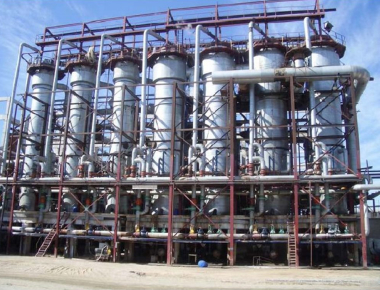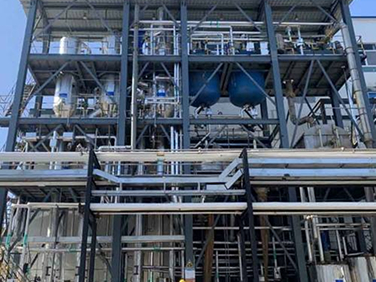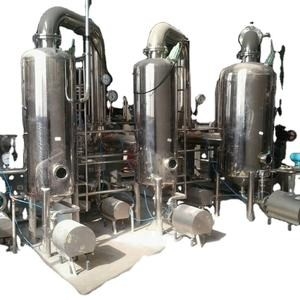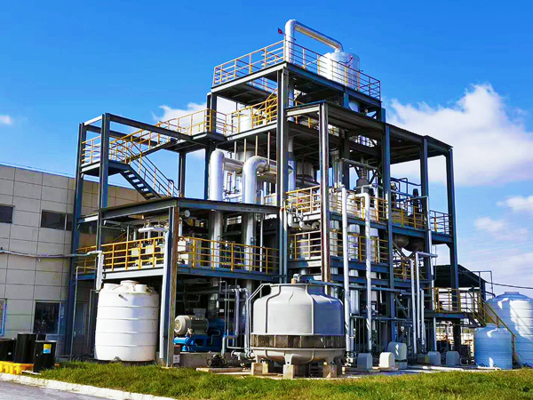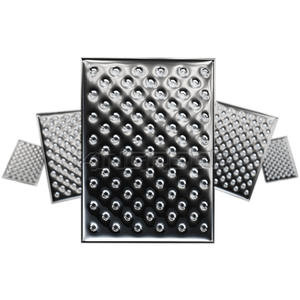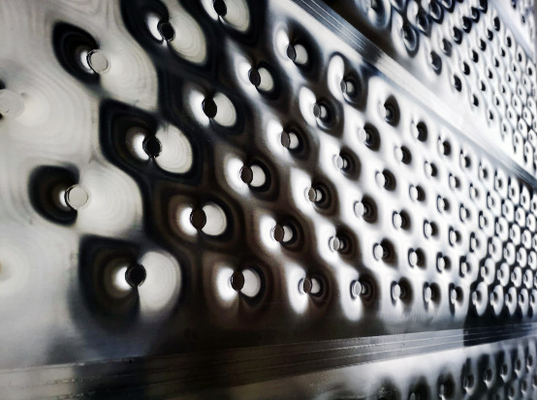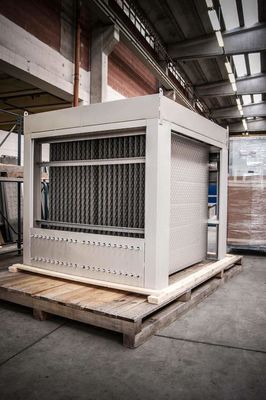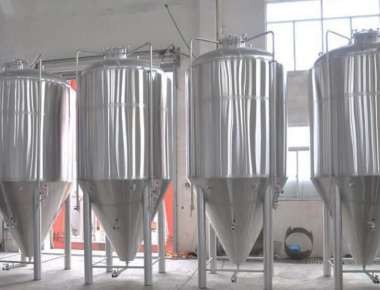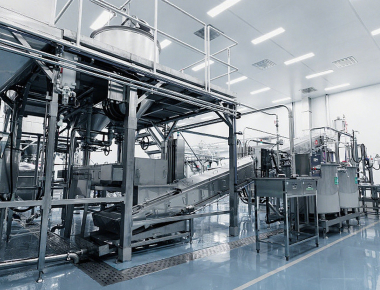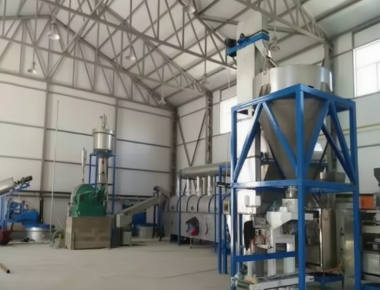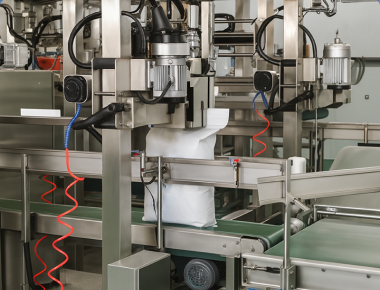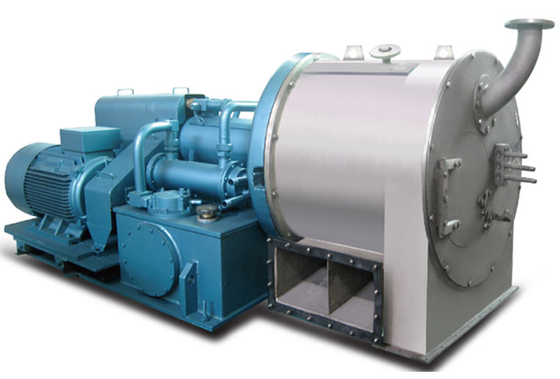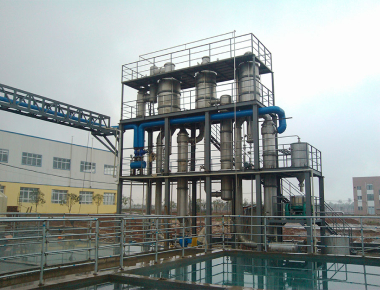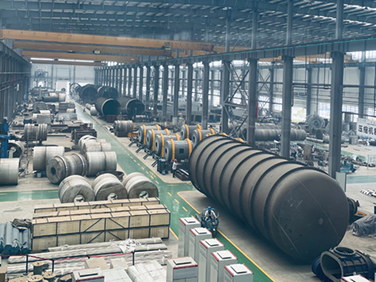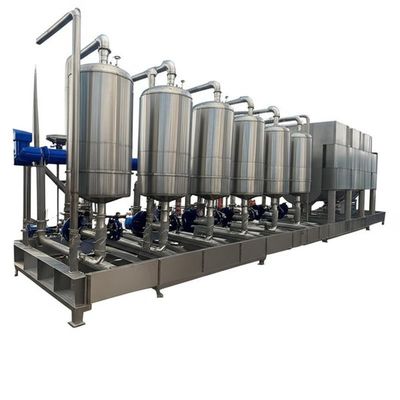1600 lph Multiple Effect Evaporator Vacuum Crystallization Equipment for Wastewater
Engineered falling/thin-film multi-effect evaporation line delivering 1,600 L/h (≈1.6 m³/h) evaporation capacity for high-salinity and industrial wastewater. The system couples efficient multiple effects with vacuum crystallization to recover clean condensate and produce stable crystals—while minimizing steam and power consumption.
Why Multiple Effect Evaporation for Wastewater?
Evaporation remains one of the most widely used and robust technologies for concentrating aqueous solutions. In a multiple effect evaporator (MEE), the vapor from one effect becomes the heating medium for the next, dramatically improving thermal efficiency. Integrating TVR (thermo-vapor recompression) or MVR (mechanical vapor recompression) further reuses “dead” vapors, reducing utility demand. Typical staged operation limits product temperature exposure—e.g., about 80 °C in the first stage down to ≈40 °C in the last stage.
Lower OPEX
Rising effects reduce fresh steam demand; optional TVR/MVR boosts savings further.
Consistent Effluent Quality
Vacuum crystallization stabilizes solids formation and improves downstream handling.
Compact, Clean, and Maintainable
Hygienic seamless piping, short residence times, and CIP-friendly internals.
How It Works
Multiple Effect Evaporation
- The number of effects directly drives energy economy—more effects, lower steam per kg of evaporation.
- Raw steam feeds the first effect; generated vapors cascade as heating media to subsequent effects.
- TVR or MVR may be integrated to recycle secondary vapors and cut utilities further.
Material Process
- Feed is delivered via feed pump and EM flowmeter to the front preheater, then to the top distributor of the 1st-effect heater for primary falling-film evaporation.
- Bottoms from the 1st effect are pumped to the 2nd-effect distributor for secondary falling-film evaporation.
- Bottoms from the 2nd effect are pumped to the 3rd-effect distributor for a third falling-film pass (if applicable).
- Concentration is monitored online (e.g., hydrometer). If on-spec, discharge to product tank; if off-spec, recirculate for re-evaporation.
Steam Process
Raw steam heats the 1st-effect heater. Secondary vapor from each effect heats the next effect. Terminal vapors are condensed in the end condenser; condensate is removed by the condensate pump.
Condensate & Non-Condensables
1st-effect condensate preheats incoming feed to save raw steam. 2nd/3rd-effect condensates are discharged by the condensate pump, meeting zero-pollution discharge targets. Non-condensables are routed to the end condenser and evacuated by a vacuum pump.
Working Principle Chart
Workshop Site
Key Characteristics
- Evaporation capacity: 500 kg/h to 80 t/h (standardized ranges); this model: ≈1,600 L/h.
- Materials: SS304 or SS316L optional.
- Closed process: Fast, low-temperature evaporation under vacuum.
- Sanitary design: Mirror-polished seamless pipes; low fouling; easy to clean (CIP).
- Steam economy: ≈1 kg steam can evaporate 3.5–4.0 kg water (typical multi-effect).
- Low temperature duty: Part of secondary steam can be re-induced to single effect (e.g., spray hot-pressure pump) to lower operating temperature.
- High concentration ratio: Falling film enables viscous feeds, short residence time, hard-to-scale surfaces; ratio up to 1:5 typical.
- Automation: PLC/HMI with interlocks and historian; GMP-friendly management.
- Configurable: Tailored to feed chemistry and client utility envelope.
Typical Three-Effect Falling Film Evaporator — Specs & Technical Parameters
| Parameter / Specifications |
HP-3.0 |
HP-4.5 |
HP-6.0 |
HP-9.0 |
HP-12.0 |
HP-15 |
HP-20 |
HP-24 |
HP-30 |
HP-50 |
| Evaporation capacity (kg/h) |
3000 |
4500 |
6000 |
9000 |
12000 |
15000 |
20000 |
24000 |
30000 |
50000 |
| Raw steam consumption (kg/h) |
900 |
1350 |
1800 |
2700 |
3600 |
4500 |
4500 |
7200 |
9000 |
15000 |
| Vacuum degree of each effect |
First |
0 |
|
Second |
448 |
| (mmHg) |
Third |
640 |
| Evaporation temperature of each effect |
First |
99 |
|
Second |
76 |
|
Third |
53 |
| Steam pressure for evaporation (MPa) |
0.6–1.0 (absolute) |
| Solid content in feed (%) |
6–7 (example) |
| Solid content outlet (%) |
42–48 (example) |
Delivery Workflow
Feed & target → Process design & heat balance → Pilot/bench validation (optional) → Detailed engineering & fabrication → Installation & commissioning → Performance test & training → Maintenance & spare strategy
Applications
Ideal for industrial wastewater concentration, high-salinity brine management, ZLD pretreatment, and resource recovery. The vacuum crystallization stage produces discrete salt crystals and clean condensate suitable for reuse or compliant discharge.
Frequently Asked Questions
Q1: How does adding more effects reduce energy consumption?
Each additional effect reuses the previous effect’s vapor as a heat source, lowering the specific steam consumption per kg of evaporation.
Q2: Can the system handle scaling or viscous feeds?
Yes. Falling-film hydrodynamics, proper velocity, and tailored ΔT help minimize scaling. CIP and mirror-polished sanitary tubes further reduce fouling.
Q3: What steam economy can I expect?
Typical multi-effect systems achieve about 3.5–4.0 kg water/kg steam, depending on the number of effects and integration of TVR/MVR.
Q4: What about condensate quality?
Terminal condensation and vacuum removal of non-condensables deliver clean condensate suitable for reuse; quality depends on feed characteristics and design options.

 Your message must be between 20-3,000 characters!
Your message must be between 20-3,000 characters! Please check your E-mail!
Please check your E-mail!  Your message must be between 20-3,000 characters!
Your message must be between 20-3,000 characters! Please check your E-mail!
Please check your E-mail! 
